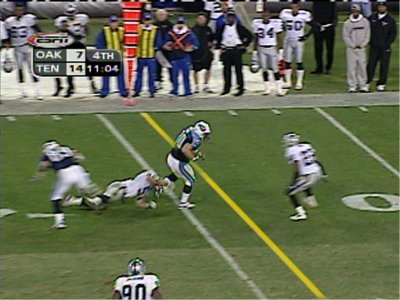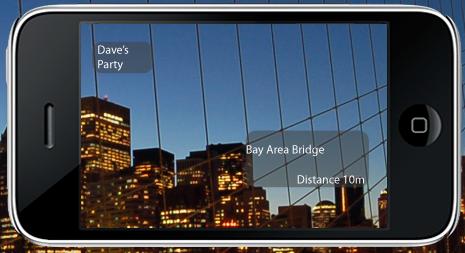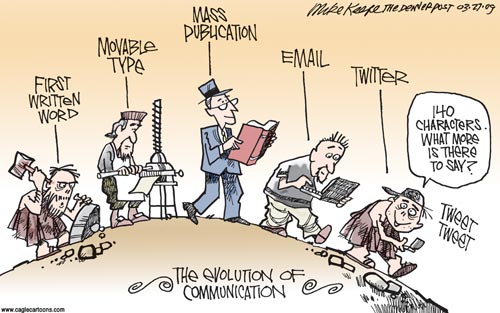In 1988 Mark Weiser coined the phrase “Ubiquitous Computing”. Ubiquitous or pervasive computing is defined as a “post-desktop model of human-computer interaction in which information processing has been thoroughly integrated into everyday objects and activities”[1]. Pervasive computing is woven into the fabrics of our environment, its there even if we can’t see it. It responds to our needs without requiring us to use or interact with a physical machine[2]. Its also know as “technology that disappears”.“The most profound technologies are those that disappear. Theyweave themselves into the fabric of everyday life until they areindistinguishable from it” –Mark Weiser
One paradigm of pervasive or ubiquitous computing that interests me is augmented reality. With the release of the latest smart phones augmented reality is becoming somewhat popular. It is defined as the “enrichment of the real world with the virtual” [3]. Before I look at what the future may hold for augmented reality here are a few examples that already exist.
Television
Many examples of augmented reality can be seen on coverage of sports events.Omega introduced a “virtual record line” in televised swimming events at the Olympic Games in Sydney in 2000[4]. The red line that represents the current world record is displayed in real time with the race. If a swimmer beats the red line then a new record has been set. In athletics there have been similar advancements. A line representing the world record can be seen moving in real time with the race along with the actual athletes themselves. The virtual part being the line drawn by a computer and the reality being the track and the runners. Examples have spread to nearly all professional sports including rugby, cricket, motor sport, rowing, American football and Ice hockey but to name a few.Most people may not even notice these subtle example because they tend to be unobtrusive.
 |
| The yellow line is an example of augmented reality |
Film
Science fiction movies have always conveyed imagery of augmented reality. In the film “Iron Man” Tony Stark builds his Iron man suit using augmented reality. He can drag and drop the various parts of his suit using his hands to interact with a hologram image that he has dragged from the computer screen. Another famous example is in the film “Terminator” where Arnold Schwarzenegger's character can see information about objects and people in real time through his eyes. This is no longer just a dream, this is now reality.
 | |
| Augmented Reality in Iron Man |
 |
| Life through the eyes of a Terminator |
Smart Phones
The new generation of phones, such as the iPhone and android phones, have now got the capabilities to support augmented reality apps. These apps can be used for various purposes. An app called "WhereMark" can tell you where you parked your car, where a friend’s house is or even just a nice quite place to sit [6]. Other apps are just for fun such as Fire-fighter 360, which does nothing more than let you pretend that you’re putting out a make believe fire. The most popular use for augmented reality in smart phones seems to be the maps. From what I can see the developers of these apps have taken advantage of the in-built GPS, which is almost standard in most new phones, and coupled it together with Google maps to make an augmented reality map that can tell you where you are, what you are looking at and all by pointing your phones camera in any direction.
 |
| Augmented Reality on an iPhone |
The Future
The future of augmented reality is very exciting. One glimpse of the future that looks like it might be just around the corner is the possibility of augmented reality in a contact lens. A team of scientists in the University of Washington in Seattle say they are producing such devices in small numbers [7]. Although these lenses will not give us super vision, and they might not be as complex as what the terminator could see, they are a sign of things to come.
These contact lenses have huge prospects in both the technological world and the medical world. In the medical world the lenses could be used to tell the user vital information about their health, such as their glucose levels or heart rate.Babak A. Parviz, one of the scientists involved, says “We’ve built several simple sensors that can detect the concentration of a molecule, such as glucose.”. This data could then be stored in an external device and doctors could have quick and easy access to the data collected from the contact lens [7].
The technological uses for this are endless once the electronic components have been perfected. One suggestion made by the scientists that grabbed my attention was the possibility of on screen translator in real-time [7]. This would be fascinating, being able to communicate to others without having to learn their language and for them to be able to understand you, all with the aid of a contact lens. These ideas may be some time away from actually happening but progress is being made. The scientists have already made a contact lens that can power an LED wirelessly. This will lead to thousands of LEDs whichhen put together can form an image, an these images will display information.
These contact lenses have huge prospects in both the technological world and the medical world. In the medical world the lenses could be used to tell the user vital information about their health, such as their glucose levels or heart rate.Babak A. Parviz, one of the scientists involved, says “We’ve built several simple sensors that can detect the concentration of a molecule, such as glucose.”. This data could then be stored in an external device and doctors could have quick and easy access to the data collected from the contact lens [7].
 |
| Augmented Reality Contact Lens |
Another company, Nokia



